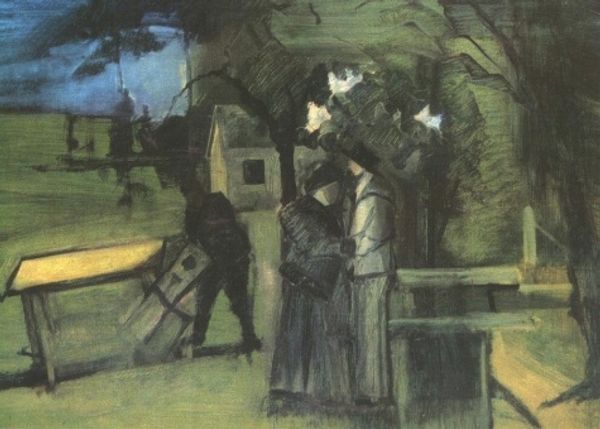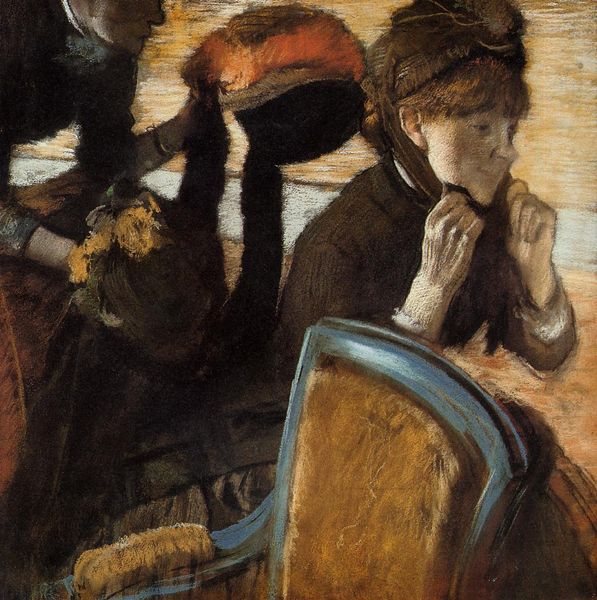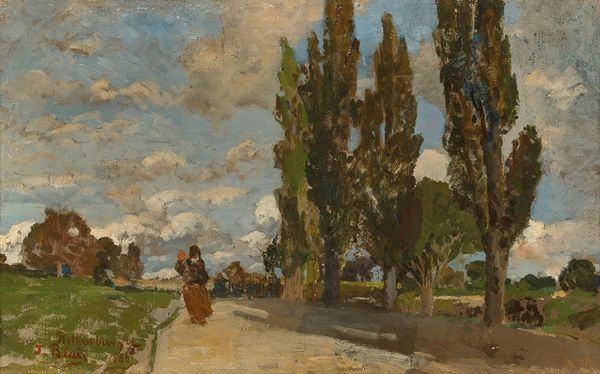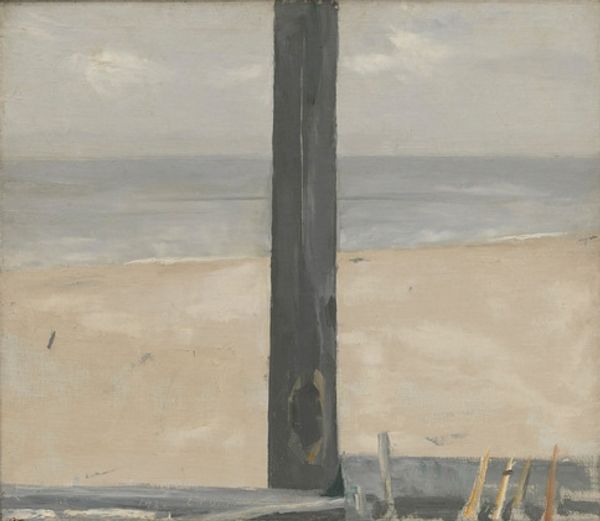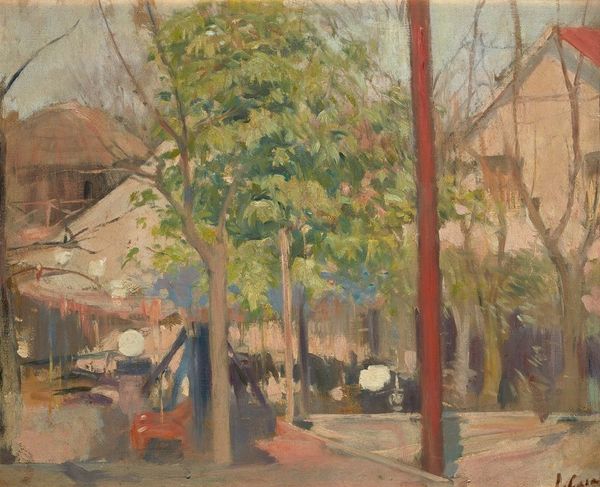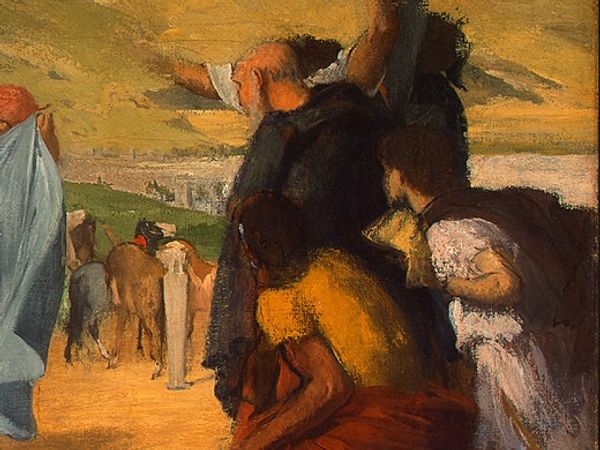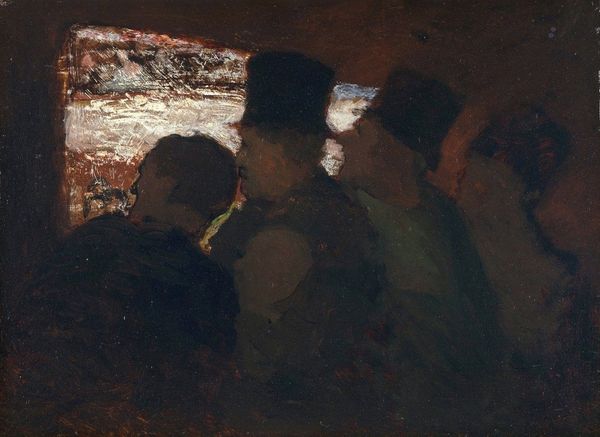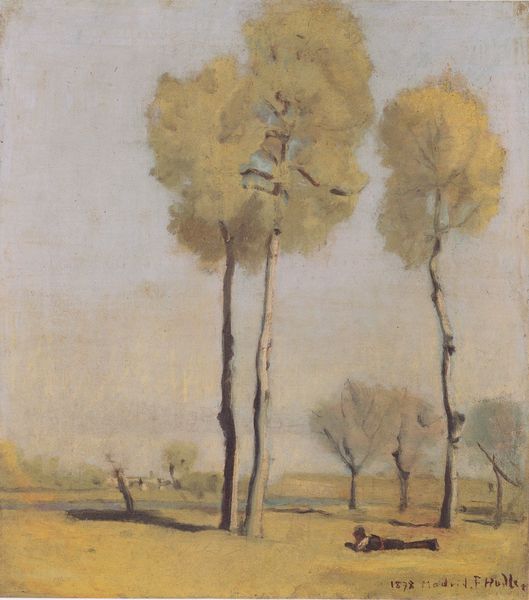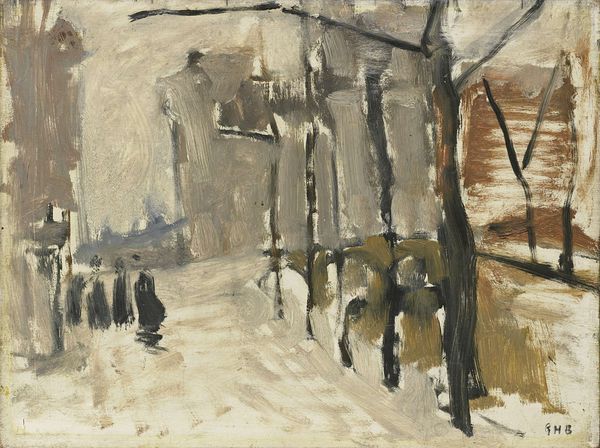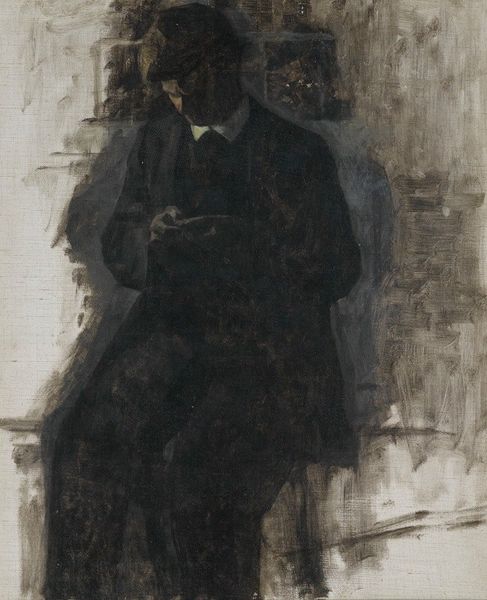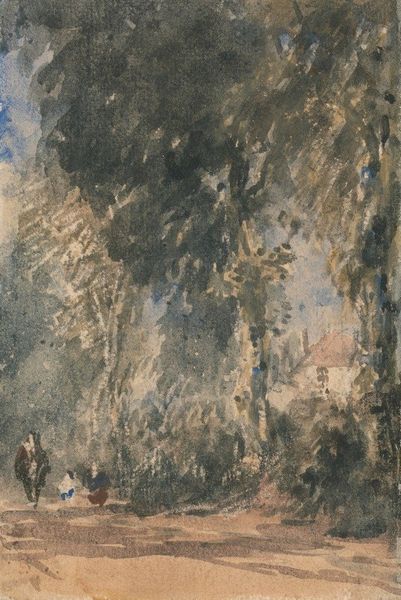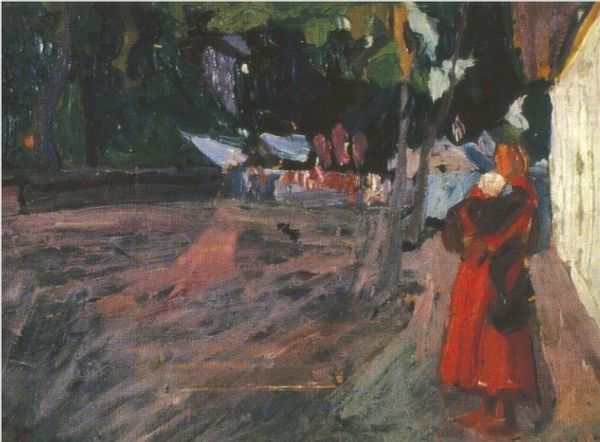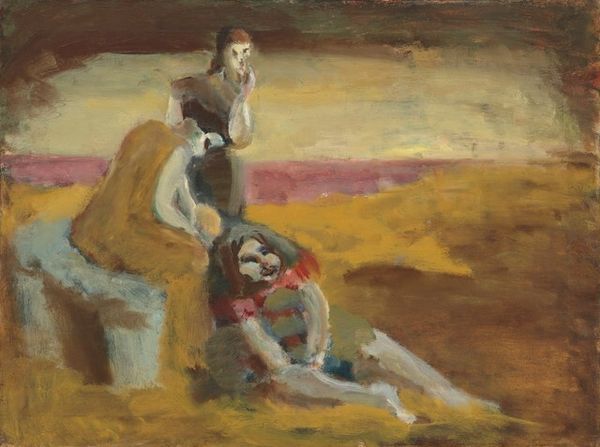
#
tree
#
possibly oil pastel
#
oil painting
#
portrait reference
#
acrylic on canvas
#
animal portrait
#
square
#
animal drawing portrait
#
portrait drawing
#
street
#
portrait art
#
fine art portrait
#
digital portrait
Dimensions: 72.39 x 59.31 cm
Copyright: Public domain US
Editor: We’re looking at Edward Hopper’s "Le Bistrot or The Wine Shop" from 1909, currently at the Whitney. I find the color palette and composition, particularly the stark white of the buildings across the bridge, quite striking and perhaps a bit isolating. What do you see in this piece, especially concerning its cultural context? Curator: What stands out to me is how this early work signals Hopper's later engagement with the theme of urban alienation. It presents a picture of Parisian life at the time. The placement of the bistro away from other things evokes the growing sense of isolation some people might have felt even amid a bustling urban environment. Do you get a sense that the composition isolates those figures seated? Editor: Absolutely. The figures are turned away from the viewer and seemingly from each other. It looks very solitary. The building almost encloses the figures seated at the table, doesn't it? Is it the physical structure emphasizing the feeling of seclusion and detachment? Curator: Exactly! It also has much to do with the historical shifts that were underway. As cities grew, anxieties about anonymity and individual experience in the modern world began to permeate the collective consciousness and subsequently seeped into the art produced during this period. Hopper’s genius was in how he visually represented these emerging psychological states. What is your understanding of art's role as a commentary or reflector of the current conditions? Editor: That's fascinating. I hadn’t considered the historical and societal influences, but I see it now. It feels like a precursor to his more mature, recognizable works in theme. Curator: Precisely. Viewing Hopper's work in light of its historical context truly underscores how art can act as both a reflection and a criticism of the human condition in a time of vast social change. Editor: This exploration made me look at "Le Bistrot" from a different angle. Curator: I learned too from how you brought attention to the striking elements of color and their importance in reinforcing Hopper’s narratives!
Comments
No comments
Be the first to comment and join the conversation on the ultimate creative platform.
